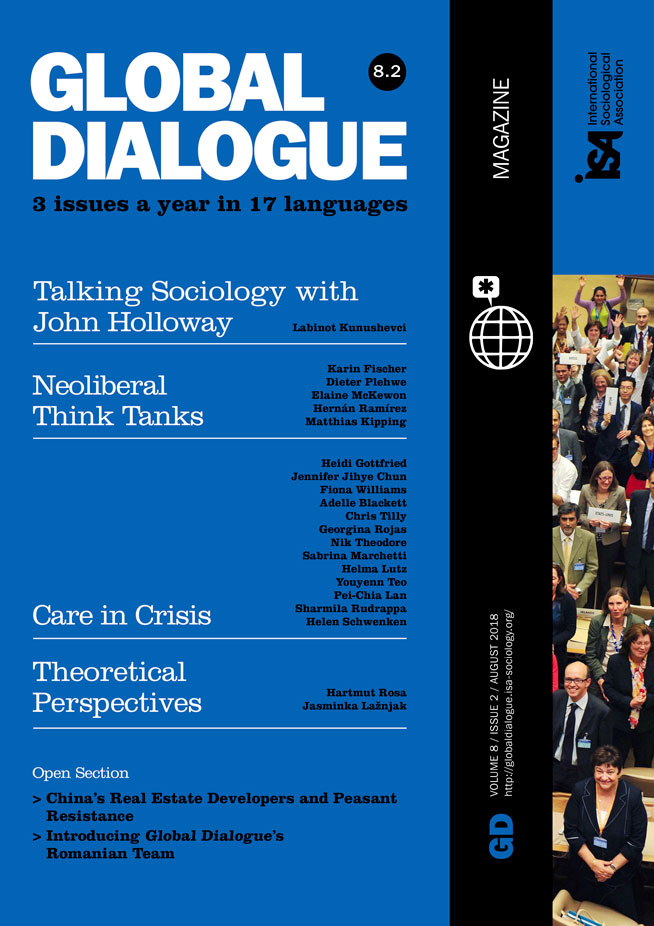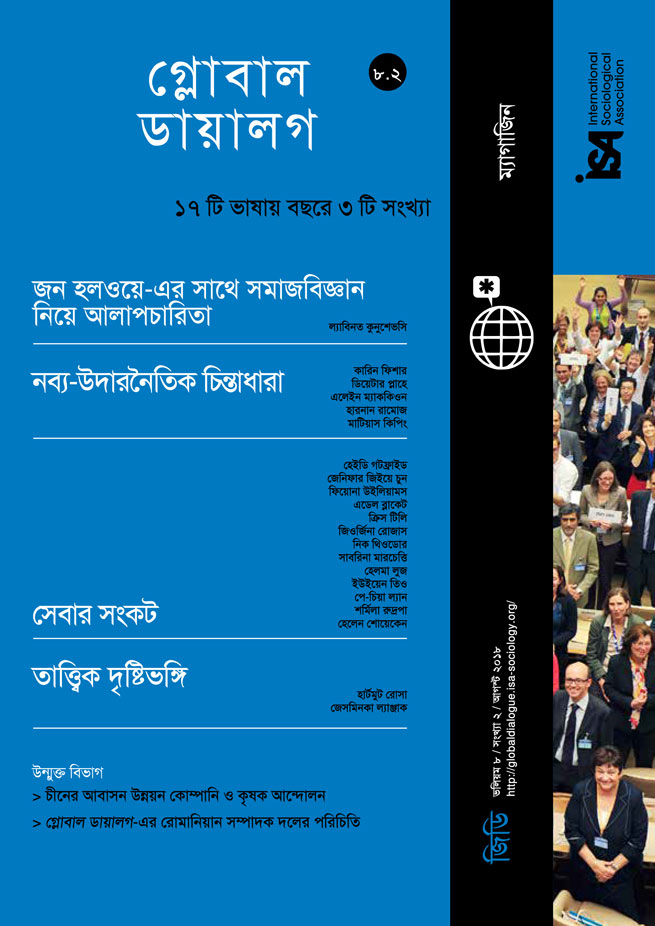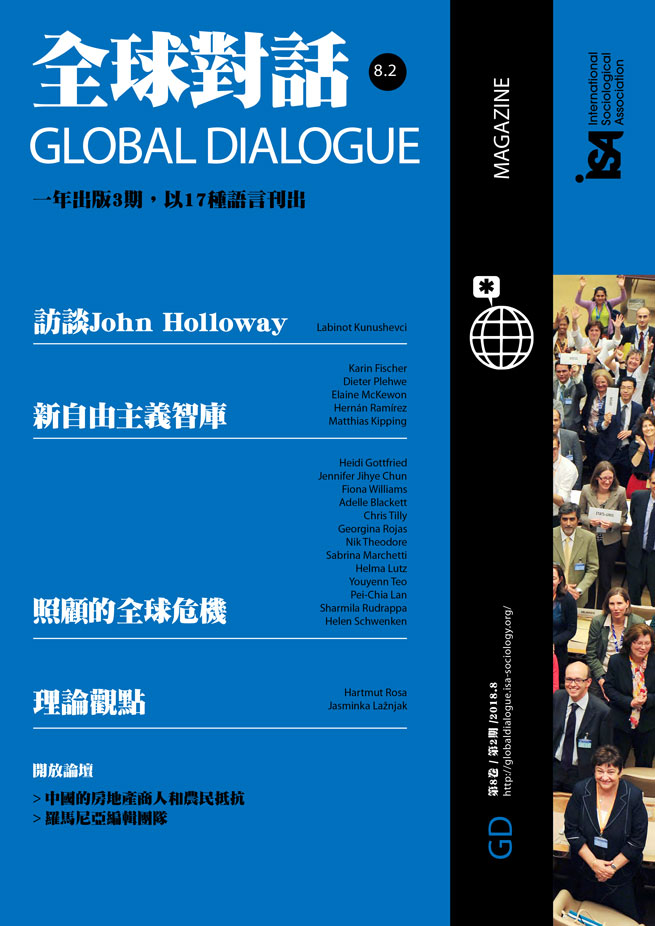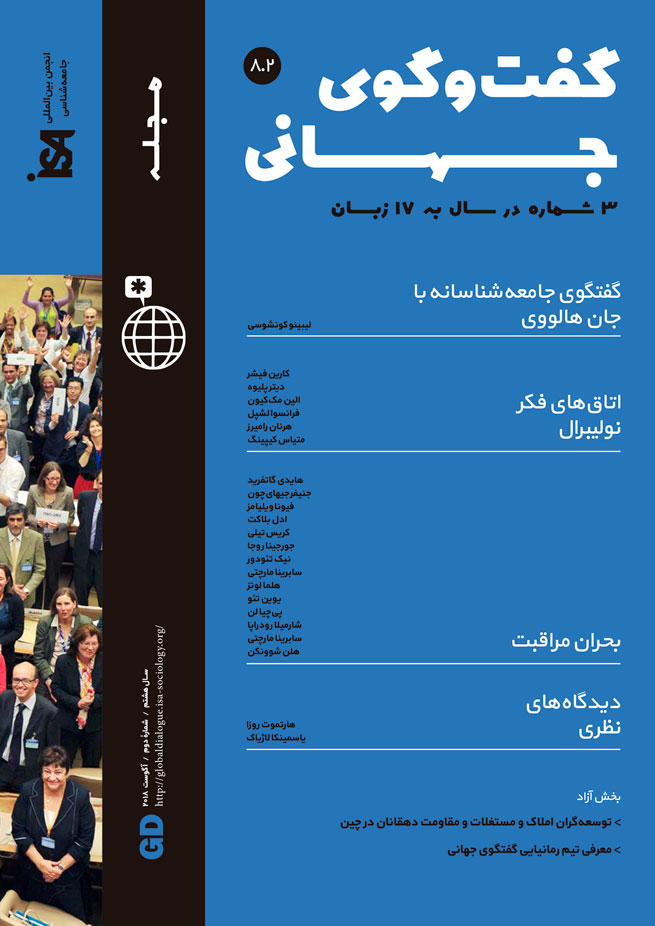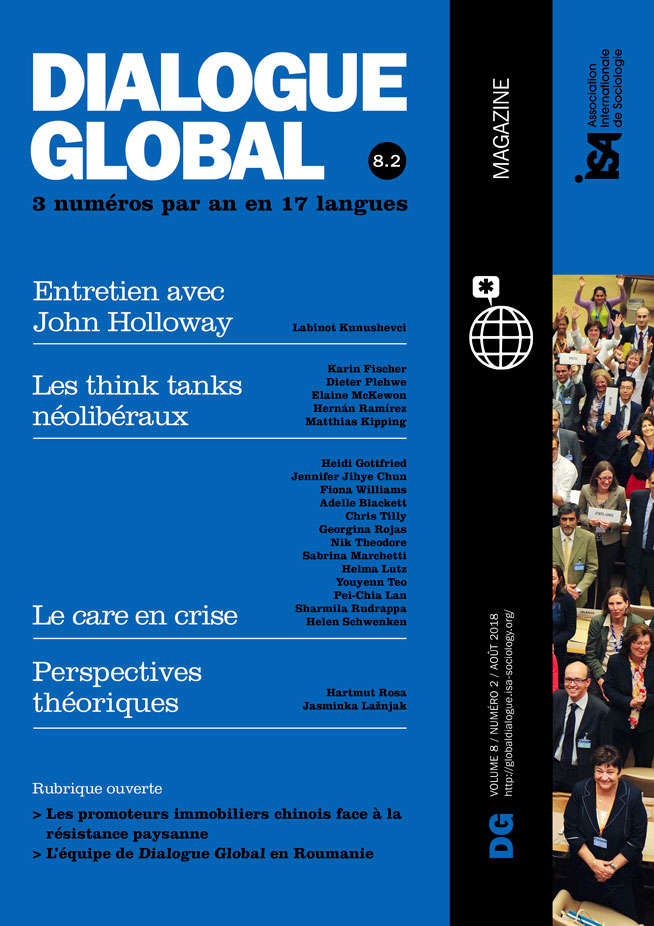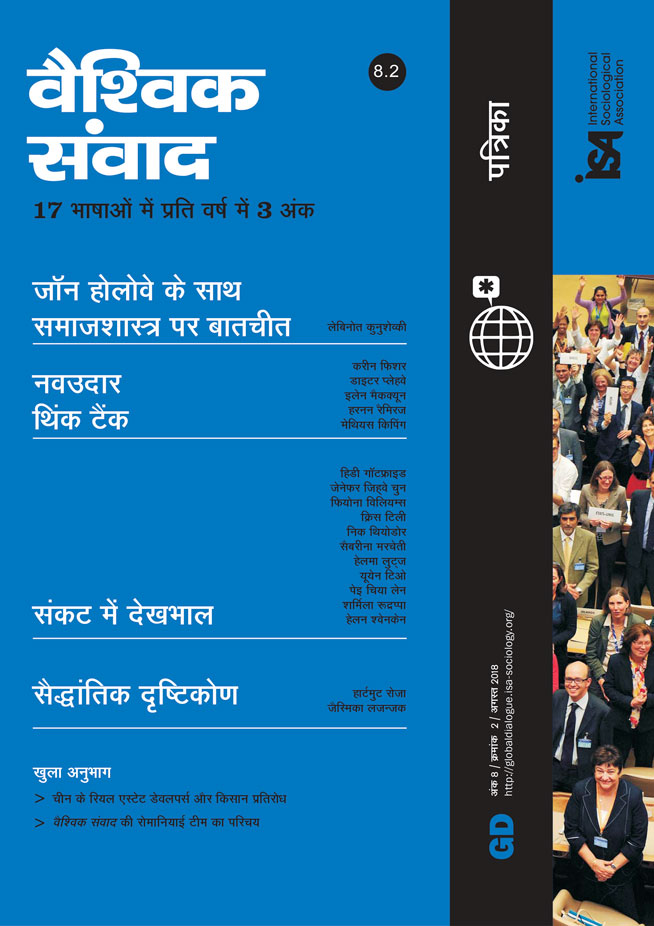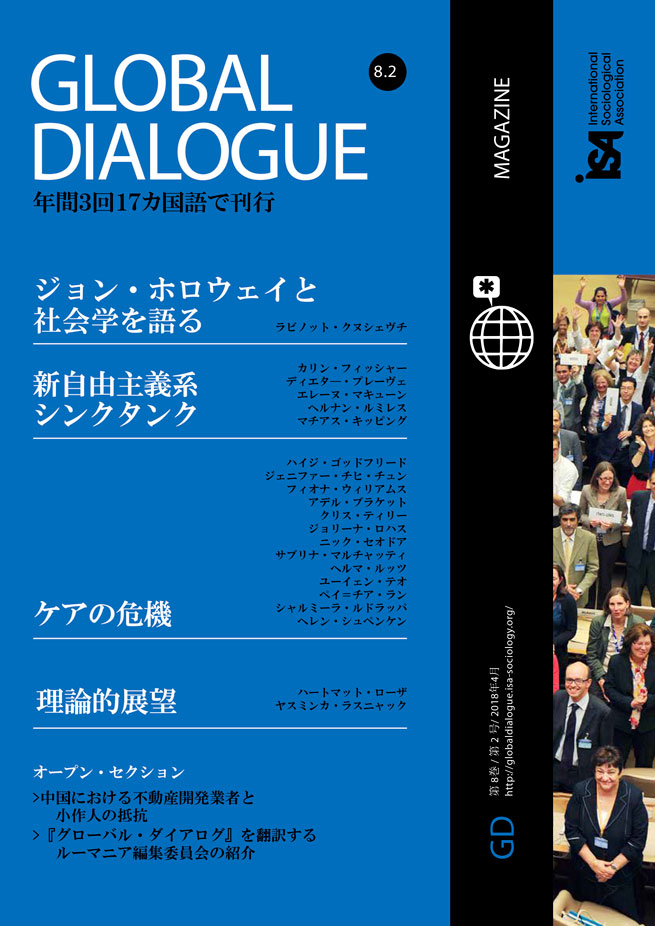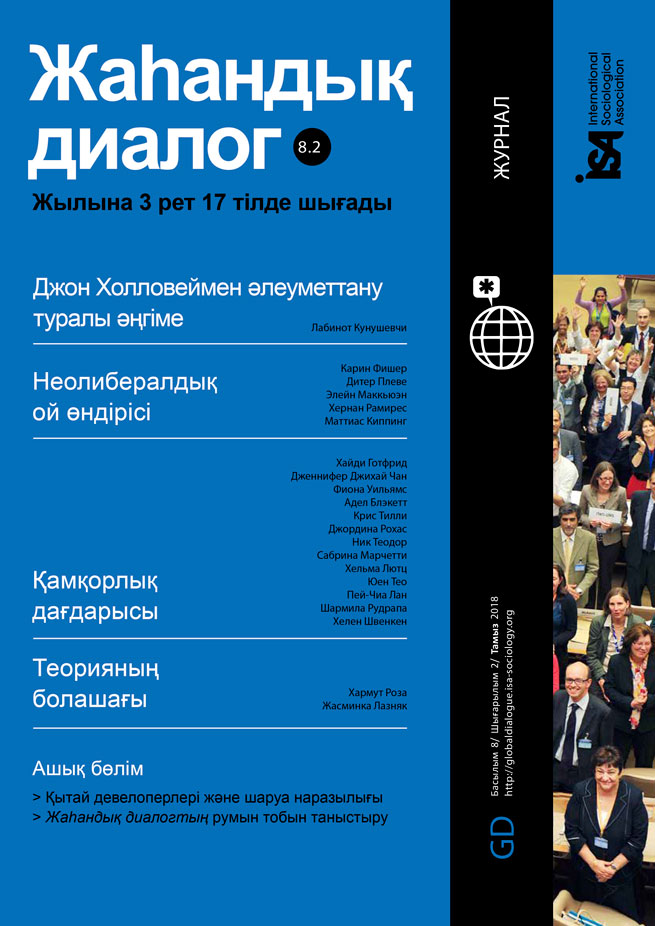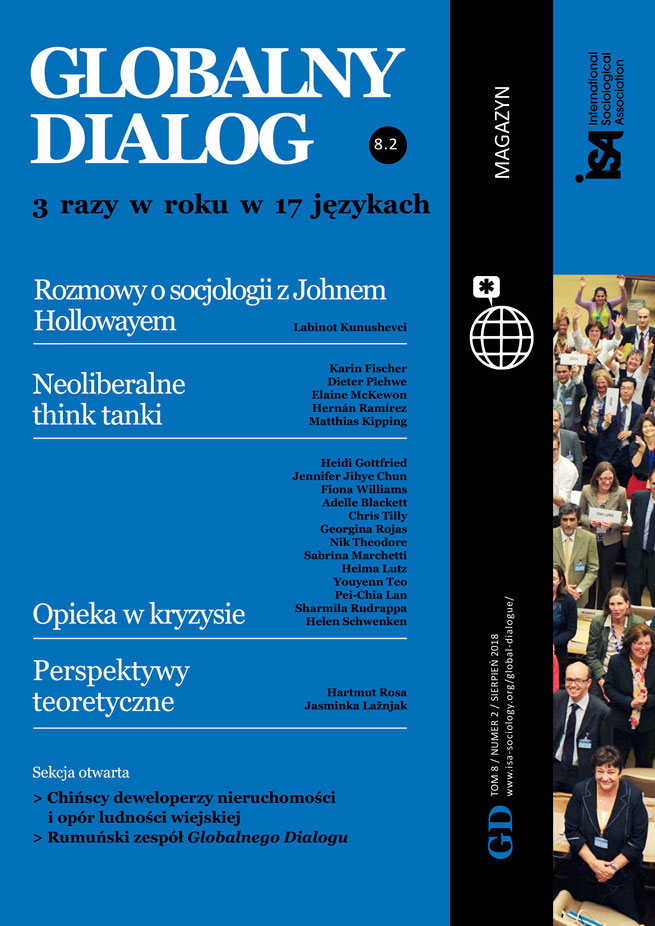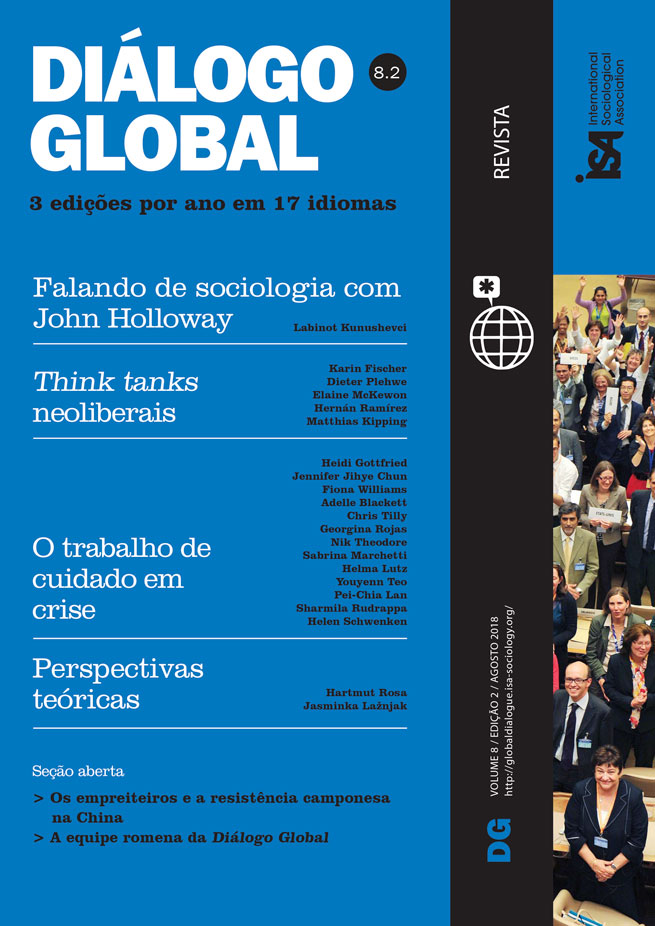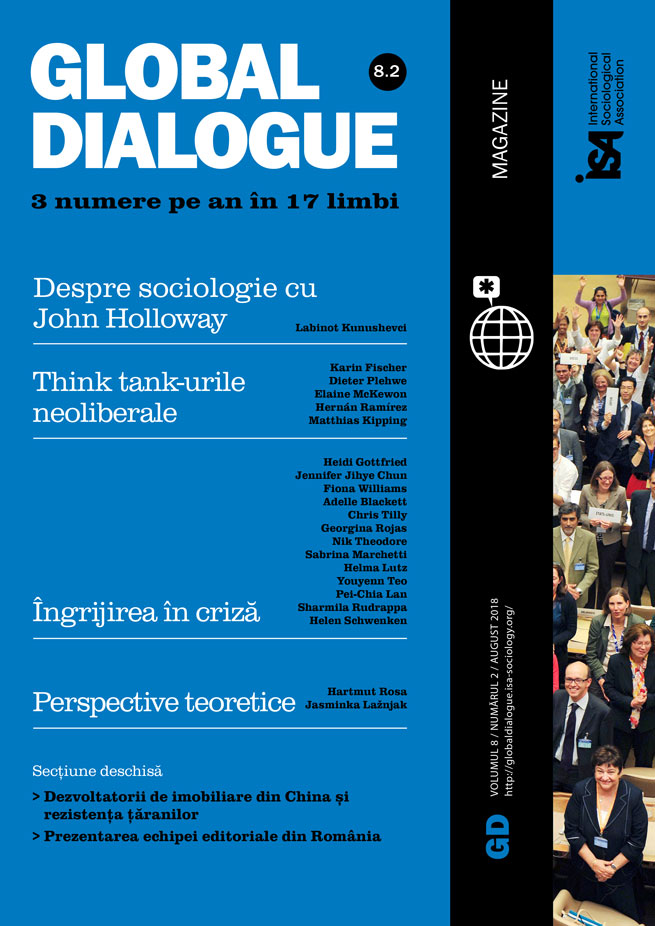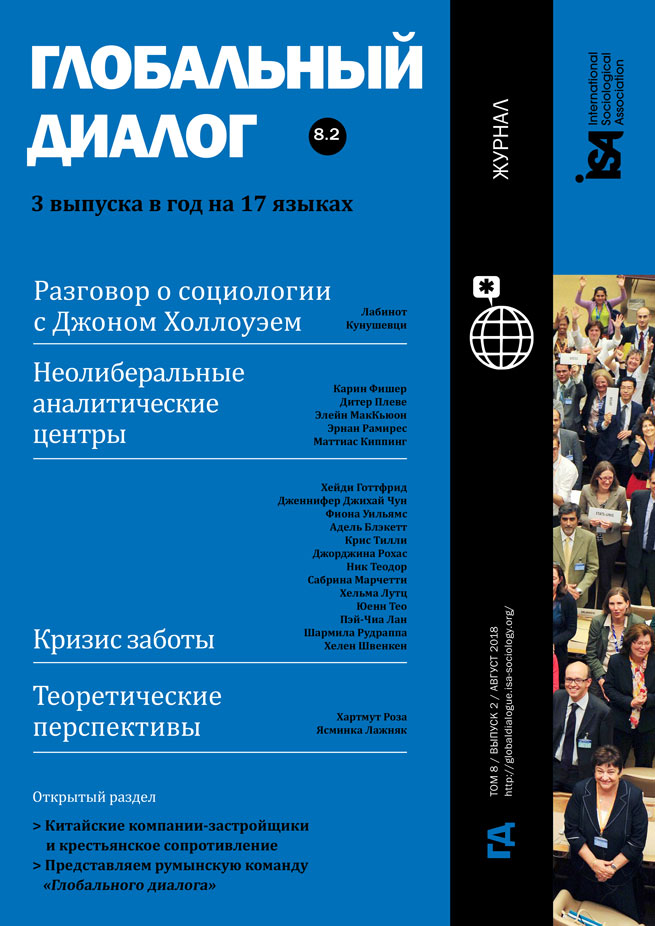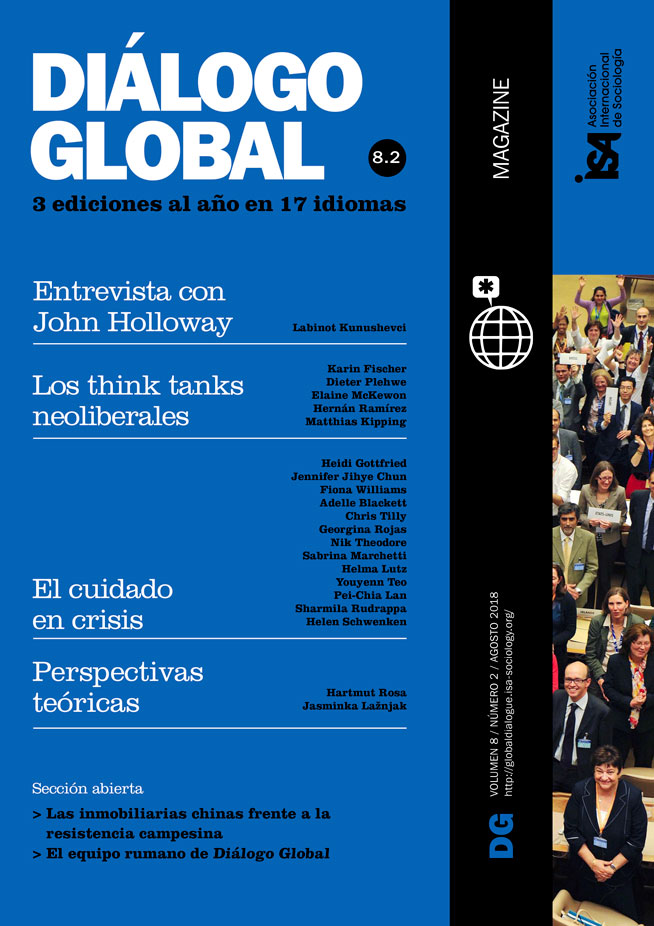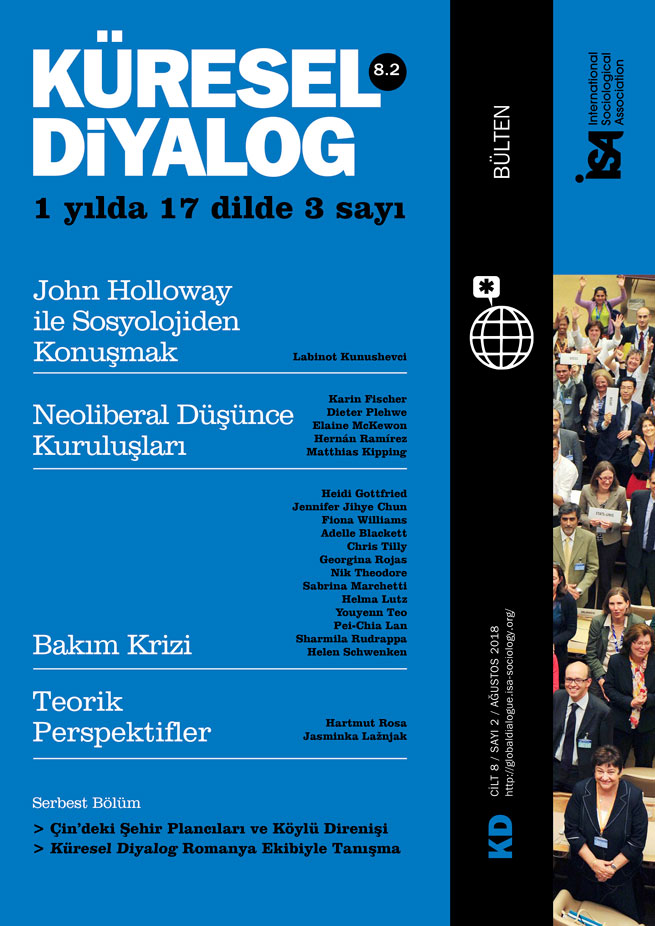Read more about Theoretical Perspectives

Sociology for Cooperation Against Balkanization: An Interview with Jasminka Lažnjak
by Labinot Kunushevci and Jasminka Lažnjak
July 09, 2018
What is a non-alienated form of being in the world? What is alienation’s other? This is the question which the following contribution seeks to answer by establishing the concept of resonance as a sociological concept.
Alienation, I want to claim, is a particular mode of relating to the world of things, to people, and to one’s self in which there is no responsivity, i.e., no meaningful inner connection. It is a relationship without genuine relation. In this mode, there certainly are causal and instrumental connections and interactions, but the world (in all its qualities) cannot be appropriated by the subject, it cannot be made to “speak,” it appears to be without sound and color. Alienation thus is a relationship which is marked by the absence of a true, vibrant exchange and connection: between a silent and grey world and a “dry” subject there is no life, both appear to be either “frozen” or genuinely chaotic and mutually aversive. Hence, in the state of alienation, self and world appear to be related in an utterly indifferent or even hostile way.
Interestingly, the true sense of alienation becomes much more comprehensible when we start to think of its alternative. Alienation’s other is a mode of relating to the world in which the subject feels touched, moved, or addressed by the people, places, objects, etc., he or she encounters. Phenomenologically speaking, we all know what it means to be touched by someone’s glance or voice, by a piece of music we listen to, by a book we read, or a place we visit. Thus, the capacity to feel affected by something, and in turn to develop intrinsic interest in the part of the world which affects us, is a core element of any positive way of relating to the world. And as we know from psychologists and psychiatrists, its marked absence is a central element of most forms of depression and burnout. Yet, affection is not enough to overcome alienation. What is additionally required is the capacity to “answer” the call: when we feel touched in the way described above, we often tend to give a physical response by developing goose bumps, an increased rate of heartbeat, a changed blood pressure, skin resistance, and so on. Resonance, as I want to call this dual movement of af<-fection (something touches us from the outside) and e->motion (we answer by giving a response and thus by establishing a connection) thus always and inevitably has a bodily basis. But the response we give, of course, has a psychological, social, and cognitive side to it too; it is based on the experience that we can reach out and answer the call, that we can establish connection through our own inner or outer reaction. It is by this reaction that the process of appropriation is brought about. We experience this kind of resonance, for example, in relationships of love or friendship, but also in genuine dialogue, when we play a musical instrument, in sports, but also very often at the workplace. The receptive as well as active connection brings about a process of progressive self- and world transformation.
Thus, resonance is not just built on the experience of being touched or affected, but also on the perception of what we can call self-efficacy. In the social dimension, self-efficacy is experienced when we realize that we are capable of actually reaching out to and affecting others, and that they truly listen and connect to us and answer in turn. But self-efficacy, of course, can also be experienced when we play soccer or the piano, when we write a text we struggle with (and which inevitably speaks its own voice), and even when we stand at the shoreline of the ocean and “connect” with the rolling waves, the water, and the wind. Only in such a mode of receptive affection and responsive self-efficacy are self and world related in an appropriative way; the encounter transforms both sides, the subject and the world experienced. Of course, the notorious problem with this claim is that it immediately provokes the objection that while the subject might well be transformed by the interaction with the violin or the ocean, the latter hardly change. But while this argument in fact depends on a perhaps not-so-innocent epistemology in which the only things capable of responding are human beings, that is, on an “asymmetrical anthropology,” it cannot be disputed that the experienced world is affected by such encounters. That resonances of this sort are vital elements of any identity formation, can be read from the fact that claims such as “after reading that book,” or “after hearing that music” or “after meeting that group” or “after climbing that mountain,” “I was a different person” are standard ingredients of almost all (auto-)biographical accounts given, for example, in interviews. It is important to notice here that the transformative effects of resonance are beyond the control of the subject: when something really touches us, we can never know or predict in advance what we will become as a result of this.
To sum up, resonance as alienation’s other, then, is defined by four crucial elements: first, by af<-fection in the sense of the experience of being truly touched or moved; second, by e->motion as the experience of responsive (as opposed to purely instrumental) self-efficacy; third, by its transformative quality; and fourth, by an intrinsic moment of unpredictability, i.e., of non-controllability or non-disposability. We can never simply establish resonance instrumentally or bring it about at will; it always remains elusive. Put differently: whether or not we “hear the call” is beyond our will and control. This in part is due to the fact that resonance is not an echo – it does not mean to hear oneself amplified or to simply feel re-assured, but involves encounter with some real “other” that remains beyond our control, that speaks in its own voice or key different from ours, and therefore remains “alien” to us.
Even more than this, this “other” needs to be experienced as a source of “strong evaluation” in the sense of Charles Taylor: only when we feel that this other (which can be a person, but also a piece of music, a mountain, or a historical event, for example) has something important to tell or teach, irrespective of whether we like to hear it or not, can we truly feel “grasped” and touched. Resonance, therefore, inevitably requires a moment of self-transcendence. It does not require, however, that we have a clear cognitive concept or previous experience of this other. We can all of a sudden be touched and shaken by something that appears to be alien altogether.
Therefore, resonance certainly is not just consonance or harmony; quite the opposite, it requires difference and sometimes opposition and contradiction in order to enable real encounter. Thus, in a completely harmonious or consonant world, there would be no resonance at all, for we would be incapable of discerning the voice of an “other” – and by consequence, of developing and discerning our own voice. Yet, a world in which there is only dissonance and conflict would not allow for experiences of resonance either: such a world would be experienced as merely repulsive. In short, resonance requires difference that allows for the possibility of self-transforming appropriation, and a responsive relationship that entails progressive, mutual transformation and adaptation. Resonance, then, is a condition between consonance and irrevocable dissonance. Because of this, I am convinced the concept can provide the key to overcome the traditional standoff between theories and philosophies based on identity and conceptions centered on difference. Resonance does not require identity, but the transformative appropriation of difference.
The non-disposability and moment-like character of resonance does not mean that it is completely random and contingent. For while the actual experience can never be completely controlled and predicted, there are two elements involved here which depend on social conditions and therefore turn resonance into a concept that can be used as a tool for social criticism. First, subjects individually and collectively experience resonance typically along particular “axes” of resonance. Thus, for some, music provides such an axis so that whenever they go to the concert hall, or to the opera, or to the festival arena they have a good chance of having that experience. For others, it will be the museum, the library, or the temple, the forest or the shoreline. More than that, we also foster social relationships that provide something like a reliable axis of resonance – we can expect moments of resonance when we are with our lovers, with our kids, or with our friends even though we all know that, very often, our respective encounters remain indifferent or even repulsive. And just as much, as we know from evidence provided by the sociology of labor, very many people develop intense relationships of resonance with their work, not just with their colleagues at the workplace, but also with the materials and tasks they are working and struggling with. Thus, the dough “responds” to the baker as does the hair to the barber, the wood to the carpenter, the plant to the gardener, or the text to the writer. In each of these cases, we find a true two-way relationship which involves experiences of self-efficacy, resistance, contradiction, appropriation, as well as mutual transformation.
When we scrutinize these axes more closely, we find that we can systematically distinguish three different dimensions of resonance: the social, material, and existential dimensions of resonance. Social axes are those that connect us with, and relate us to, other human beings. In most contemporary societies, love, friendship, but also democratic citizenship are conceptualized as “resonant” relationships of this type. Material axes are those we establish with certain objects – natural or artefactual, pieces of art, amulets, or tools and materials we work with or use for sports. Yet, I believe with philosophers like Karl Jaspers, William James, and Martin Buber that human subjects also seek and find existential “axes of resonance” that connect them with and relate them to life, or existence, or the universe as such. As those authors tried to show quite convincingly, this is what brings about religious experiences, and what makes religion plausible in the first place. The central element of the Bible, or the Quran, or the Upanishads, is the idea that at the root of our existence, at the heart of our being, there is not a silent, indifferent, or repulsive universe, dead matter, or blind mechanisms, but a process of resonance and response. There are, of course, other axes of existential resonance that do not depend on religious ideas. Nature, in particular, is experienced as an ultimate, comprehensive, as well as responsive reality. To listen to the voice of nature has become a central idea not just in idealistic philosophy, but even more so in many everyday routines and practices. In a strikingly similar way, art and music open up an analogous axis for the recipient. In each case, resonance does not need to be a pleasant, harmonious experience, but can harbor essentially disturbing aspects too.
Now, while I take it that such concrete axes of resonance are not anthropologically given but rather culturally and historically constructed, the establishment of some such axes is nevertheless indispensable for a good life, for they provide contexts in which subjects are disposed to open up to experiences of resonance. To shift into a mode of dispositional resonance requires taking the risk of making ourselves vulnerable. It conceptually implies that we let ourselves be touched, and even transformed, in a non-predictable and non-controllable way. Thus, in contexts where we are full of fear, or in stress, or in fight mode, or focused on bringing about a certain result, we do not seek or allow for resonance; quite the contrary, doing so would be dangerous and harmful. Given this, it becomes obvious that it would be foolish to require that we should always be in a mode of dispositional resonance. The capacity to leave this mode, to distance oneself from the world, to take a cold, instrumental, analytical stance towards it, is very obviously a cultural achievement that is indispensable not just for keeping up the business of modern science and technology, but to actually provide and safeguard a form of life that allows for human resonance in the three dimensions mentioned.
With this conception in our toolkit, I believe that we can start to use resonance as a yardstick for critical sociology in the sense of a critique of the prevailing social conditions. Its starting point is the idea that a good life requires the existence of reliable and viable axes of resonance in all three dimensions. A subject will have a good life, I claim, if he or she finds and preserves social, material, and existential axes of resonance which allow for iterative and periodic reassurance of existential responsivity and connection, i.e. of a resonant mode of being. The possibility of such a good life, then, is endangered if the conditions for these axes and for the dispositional mode of resonance are structurally or systematically undermined.
The dominant institutional mode of dynamic stabilization, which requires incessant growth, acceleration, and innovation in order to reproduce the social structure and the institutional status quo, inevitably implies the tendency and the potential for such a systematic undermining, for it forces subjects into a mode of “dispositional alienation”: they are forced into a reifying, instrumental mode of relating to objects and subjects in order to increase and secure their resources, to speed up, and to optimize their equipment. The pervasive logic of competition in particular undermines the possibility of entering a mode of resonance – we cannot compete and resonate simultaneously. Furthermore, as we know from research on empathy and from neurological studies, time pressure actually works as a sure preventer of resonance. The same is true, of course, if we are driven by fear. Fear forces us to erect barriers and to close down our minds, it shifts us to a mode in which we precisely try not to be touched by “the world.” Therefore, the conditions of resonance are such that they require contexts of mutual trust and fearlessness; and these contexts in turn require time and stability as background conditions. Finally, the pervasive bureaucratic attempts to completely control processes and outcomes in order to ensure their efficiency and transparency, which define late modern workplace conditions, are equally problematic for relationships of resonance, because they are incompatible with the latter’s unpredictability and transformative potential. What is needed, then, is a thorough critique of the conditions of resonance.
Hartmut Rosa, University of Jena, Germany <hartmut.rosa@uni-jena.de>
This issue is not available yet in this language.
Request to be notified when the issue is available in your language.
If you prefer, you can access previous issues available in your language:
